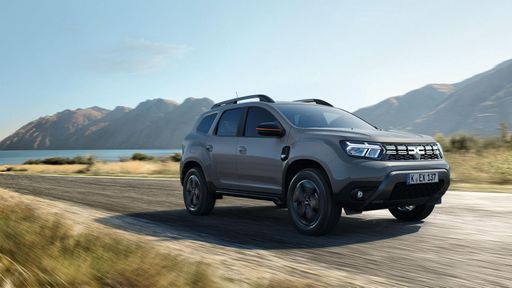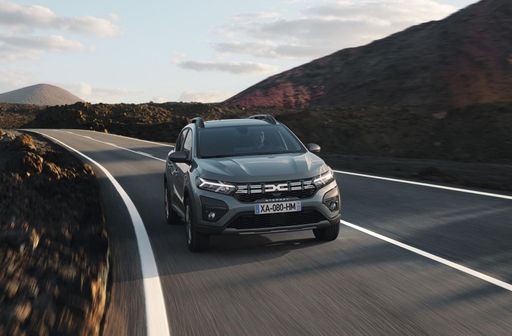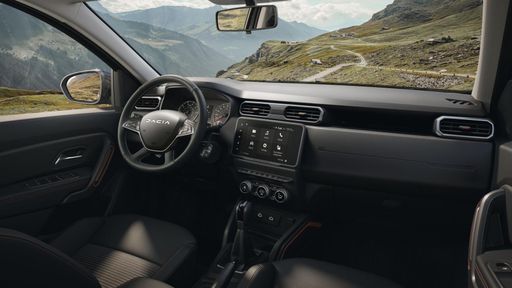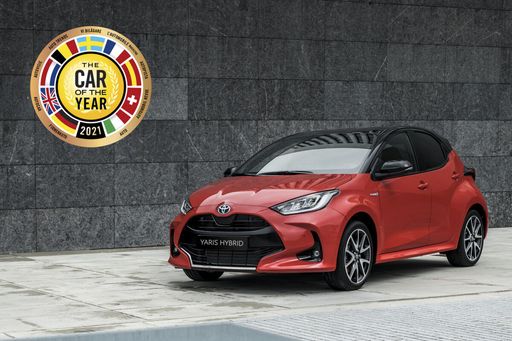Dacia Duster vs Toyota Yaris – Which one offers the better deal?
Compare performance, boot capacity, efficiency and price at a glance.
Find out which car is the better choice for you – Dacia Duster or Toyota Yaris?
Here’s where it gets real: The technical differences in detail
Costs and Efficiency: Price and efficiency are key factors when choosing a car – and this is often where the real differences emerge.
Dacia Duster has a evident advantage in terms of price – it starts at 16300 £, while the Toyota Yaris costs 21900 £. That’s a price difference of around 5580 £.
Fuel consumption also shows a difference: the Toyota Yaris manages with 3.80 L and is therefore noticeable more efficient than the Dacia Duster with 5 L. The difference is about 1.20 L per 100 km.
Engine and Performance: Under the bonnet, it becomes clear which model is tuned for sportiness and which one takes the lead when you hit the accelerator.
When it comes to engine power, the Toyota Yaris has a significantly edge – offering 280 HP compared to 140 HP. That’s roughly 140 HP more horsepower.
In acceleration from 0 to 100 km/h, the Toyota Yaris is convincingly quicker – completing the sprint in 5.50 s, while the Dacia Duster takes 9.90 s. That’s about 4.40 s faster.
In terms of top speed, the Toyota Yaris performs clearly perceptible better – reaching 230 km/h, while the Dacia Duster tops out at 180 km/h. The difference is around 50 km/h.
There’s also a difference in torque: the Toyota Yaris pulls convincingly stronger with 390 Nm compared to 230 Nm. That’s about 160 Nm difference.
Space and Everyday Use: Beyond pure performance, interior space and usability matter most in daily life. This is where you see which car is more practical and versatile.
Both vehicles offer seating for 5 people.
In curb weight, the Toyota Yaris is evident lighter – 1090 kg compared to 1351 kg. The difference is around 261 kg.
In terms of boot space, the Dacia Duster offers convincingly more room – 517 L compared to 286 L. That’s a difference of about 231 L.
In maximum load capacity, the Dacia Duster performs convincingly better – up to 1609 L, which is about 674 L more than the Toyota Yaris.
When it comes to payload, Toyota Yaris to a small extent takes the win – 525 kg compared to 430 kg. That’s a difference of about 95 kg.
All in all, the Toyota Yaris shows itself to be leaves the rival little chance and secures the title of DriveDuel Champion.
It impresses with the more balanced overall package and proves to be the more versatile companion for everyday use.
Dacia Duster
The Dacia Duster represents a compelling choice for those seeking an affordable yet robust SUV in the market. With its rugged design and practicality, it tackles both urban commutes and off-road adventures with ease. Inside, the vehicle offers a spacious cabin that ensures comfort, while maintaining its reputation for delivering excellent value for money.
details @ dacia-presse.de
@ dacia-presse.de
 @ dacia-presse.de
@ dacia-presse.de
 @ dacia-presse.de
@ dacia-presse.de
 @ dacia-presse.de
@ dacia-presse.de
Toyota Yaris
The Toyota Yaris exudes a charming blend of practicality and style, making it an appealing choice for urban drivers. Its compact design allows for easy manoeuvrability in crowded city streets, while the interior offers a surprisingly spacious and comfortable environment. With a focus on fuel efficiency and reliability, the Yaris remains a popular option for those seeking a balance between performance and economy.
details @ Toyota
@ Toyota
 @ Toyota
@ Toyota

|

|
|
|
|
Costs and Consumption |
|
|---|---|
|
Price
16300 - 24800 £
|
Price
21900 - 46700 £
|
|
Consumption L/100km
5 - 7.6 L
|
Consumption L/100km
3.8 - 9.5 L
|
|
Consumption kWh/100km
-
|
Consumption kWh/100km
-
|
|
Electric Range
-
|
Electric Range
-
|
|
Battery Capacity
0.60 kWh
|
Battery Capacity
-
|
|
co2
113 - 148 g/km
|
co2
87 - 215 g/km
|
|
Fuel tank capacity
49 - 55 L
|
Fuel tank capacity
36 - 50 L
|
Dimensions and Body |
|
|---|---|
|
Body Type
SUV
|
Body Type
Hatchback
|
|
Seats
5
|
Seats
4 - 5
|
|
Doors
5
|
Doors
3 - 5
|
|
Curb weight
1351 - 1465 kg
|
Curb weight
1090 - 1356 kg
|
|
Trunk capacity
430 - 517 L
|
Trunk capacity
141 - 286 L
|
|
Length
4343 mm
|
Length
3940 - 3995 mm
|
|
Width
1813 mm
|
Width
1745 - 1805 mm
|
|
Height
1656 - 1661 mm
|
Height
1455 - 1500 mm
|
|
Max trunk capacity
1545 - 1609 L
|
Max trunk capacity
935 L
|
|
Payload
414 - 430 kg
|
Payload
289 - 525 kg
|
Engine and Performance |
|
|---|---|
|
Engine Type
LPG, Full Hybrid, Petrol MHEV
|
Engine Type
Full Hybrid, Petrol
|
|
Transmission
Manuel, Automatic
|
Transmission
Automatic, Manuel
|
|
Transmission Detail
Manual Gearbox, Automated Manual
|
Transmission Detail
CVT, Manual Gearbox, Automatic Gearbox
|
|
Drive Type
Front-Wheel Drive, All-Wheel Drive
|
Drive Type
Front-Wheel Drive, All-Wheel Drive
|
|
Power HP
91 - 140 HP
|
Power HP
116 - 280 HP
|
|
Acceleration 0-100km/h
9.9 - 14 s
|
Acceleration 0-100km/h
5.5 - 9.7 s
|
|
Max Speed
160 - 180 km/h
|
Max Speed
175 - 230 km/h
|
|
Torque
160 - 230 Nm
|
Torque
390 Nm
|
|
Number of Cylinders
3 - 4
|
Number of Cylinders
3
|
|
Power kW
67 - 104 kW
|
Power kW
85 - 206 kW
|
|
Engine capacity
999 - 1598 cm3
|
Engine capacity
1490 - 1618 cm3
|
General |
|
|---|---|
|
Model Year
2024 - 2025
|
Model Year
2024 - 2025
|
|
CO2 Efficiency Class
D, C, E
|
CO2 Efficiency Class
B, G
|
|
Brand
Dacia
|
Brand
Toyota
|
What drivetrain options does the Dacia Duster have?
The Dacia Duster is offered with Front-Wheel Drive or All-Wheel Drive.
The prices and data displayed are estimates based on German list prices and may vary by country. This information is not legally binding.
